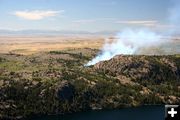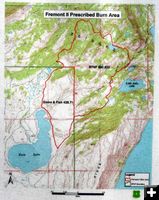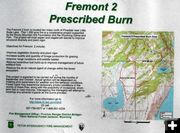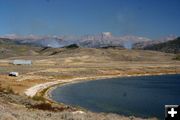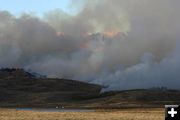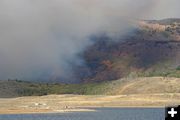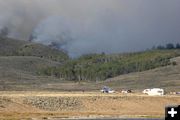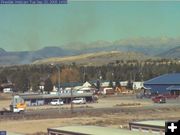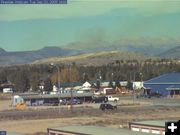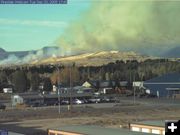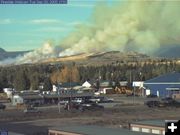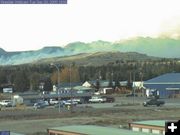
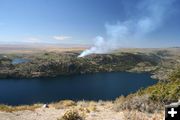
Fremont 2 Burn
View of the Fremont 2 prescribed burn as seen from Skyline Drive. The upper end of Fremont Lake is in the foreground. Little Soda Lake is to the left of the smoke column. Soda Lake can be seen in the distance behind Little Soda.
|

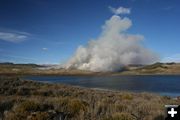
Soda Lake burn
View of the Fremont 2 prescribed burn from Soda Lake. Fremont Peak and the Wind River Mountains are in the background.
|

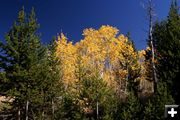
Aspen trees
One of the goals of the burn is to improve habitat for aspen stands, which are desireable for wildlife habitat.
|
|
Fire as a tool for resource benefit
Fremont 2 Prescribed Burn
September 20, 2005
In an effort to improve forest habitat for wildlife, the Wyoming Game and Fish Department and Bridger Teton National Forest are conducting a prescribed controlled burn of approximately 1,200 acres of aspen and sagebrush habitat on Fremont Ridge north of Pinedale. The burn is located near Soda Lake, ten miles north of Pinedale.
The purpose of the prescribed fire is to rejuvenate vegetation, such as aspen, a fire-dependent species, to provide high quality forage for elk and other wildlife. Four hundred of the acres in the burn area are part of the Soda Lake Wildlife Habitat Management Area.
"This is habitat elk and other big game use primarily during the winter months," says Wyoming Game and Fish Brucellosis Biologist Jared Rogerson. "Ideally, we would like to provide quality native forage so that elk spend less time congregated on the Soda Lake feed ground. The more we can spread animals out on the landscape, the less chance there is of diseases, like brucellosis, being spread amongst the animals."
Prescribed fires are used as a management tool to improve the overall long-term health of the watershed, restoring a natural process that has historically occurred on the landscape for thousands of years. It has been estimated that wildfires occurred in this region every 25-75 years. Much of the landscape across the west has not burned for well over 100 years.
"Without fire, much of the landscape is shifting to extensive stands of old, decadent sage brush with few grasses and forbs or solid stands of conifer tress with less aspen," says Rogerson. It is estimated that the Western states have lost approximately half of the aspen it once had, primarily due to fire suppression.
Aspen habitat is considered to be one of the most valuable and biologically diverse habitats in the Rocky Mountains, second in wildlife diversity only to wetland habitat.
Hunters and anglers should be aware that if the burn is able to take place these activities may disrupt their planned outings. While Soda Lake will remain open for fishing, the road around the East side of the lake will be closed during the burning operation, which will likely take one or two days. Managers are taking necessary measures to prevent any potential soil erosion into Soda Lake while there is a lack of vegetation on nearby slopes.
"We realize this activity may be an inconvenience to some hunters and anglers," says Rogerson "But, we are confident that, over the long haul, it will make great strides towards improving the area for wildlife and improve overall watershed health."
For further information you may contact the Pinedale Game and Fish office at 1-800-452-9107 or the Pinedale Ranger District at 307-367-4326.
Photos by Clint Gilchrist, Pinedale Online!
|



